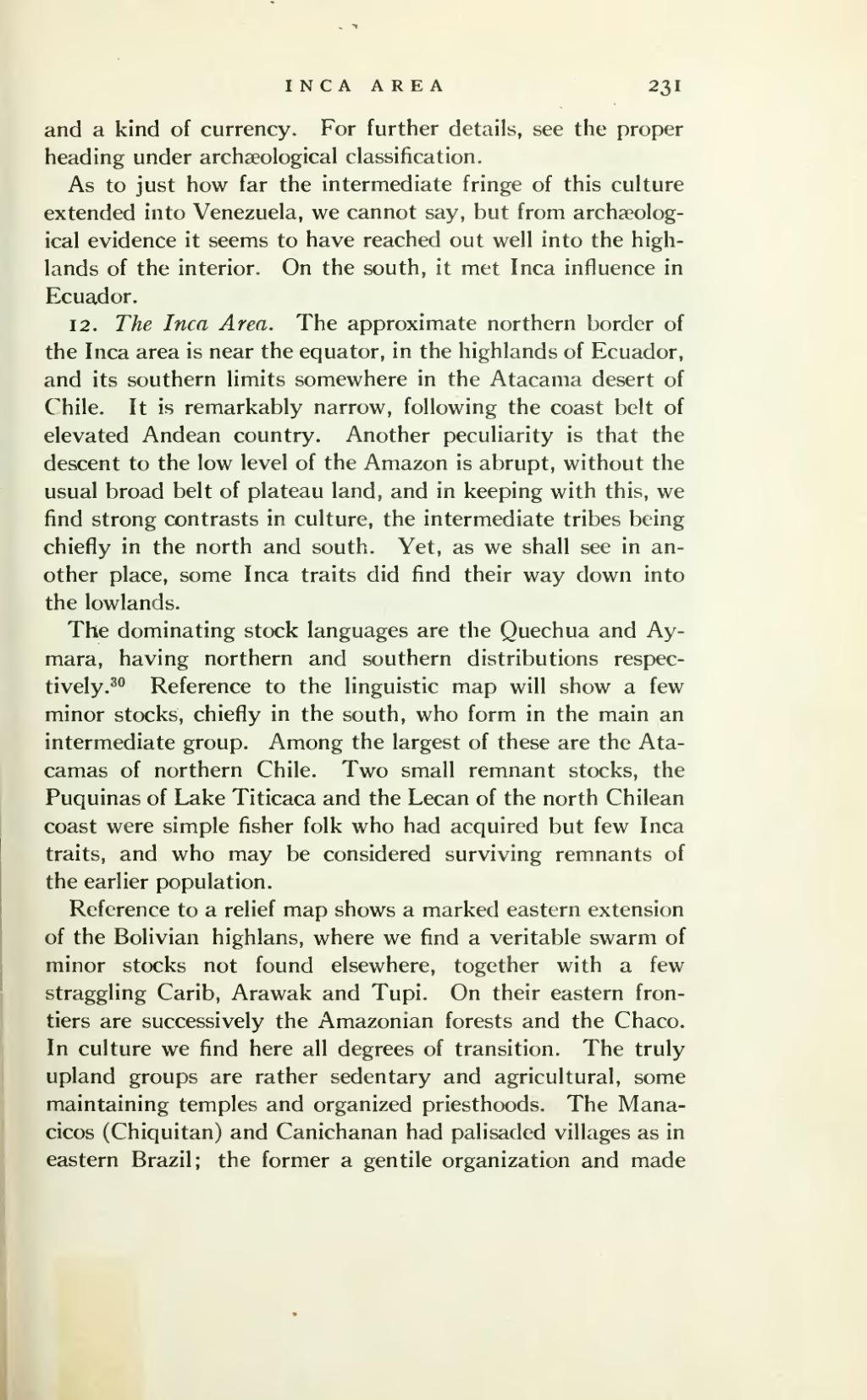and a kind of currency. For further details, see the proper heading under archæological classification.
As to just how far the intermediate fringe of this culture extended into Venezuela, we cannot say, but from archæological evidence it seems to have reached out well into the highlands of the interior. On the south, it met Inca influence in Ecuador.
12. The Inca Area. The approximate northern border of the Inca area is near the equator, in the highlands of Ecuador, and its southern limits somewhere in the Atacama desert of Chile. It is remarkably narrow, following the coast belt of elevated Andean country. Another peculiarity is that the descent to the low level of the Amazon is abrupt, without the usual broad belt of plateau land, and in keeping with this, we find strong contrasts in culture, the intermediate tribes being chiefly in the north and south. Yet, as we shall see in another place, some Inca traits did find their way down into the lowlands.
The dominating stock languages are the Quechua and Aymara, having northern and southern distributions respectively.[1] Reference to the linguistic map will show a few minor stocks, chiefly in the south, who form in the main an intermediate group. Among the largest of these are the Atacamas of northern Chile. Two small remnant stocks, the Puquinas of Lake Titicaca and the Lecan of the north Chilean coast were simple fisher folk who had acquired but few Inca traits, and who may be considered surviving remnants of the earlier population.
Reference to a relief map shows a marked eastern extension of the Bolivian highlans, where we find a veritable swarm of minor stocks not found elsewhere, together with a few straggling Carib, Arawak and Tupi. On their eastern frontiers are successively the Amazonian forests and the Chaco. In culture we find here all degrees of transition. The truly upland groups are rather sedentary and agricultural, some maintaining temples and organized priesthoods. The Manacicos (Chiquitan) and Canichanan had palisaded villages as in eastern Brazil; the former a gentile organization and made
- ↑ Markham, 1910. I.
